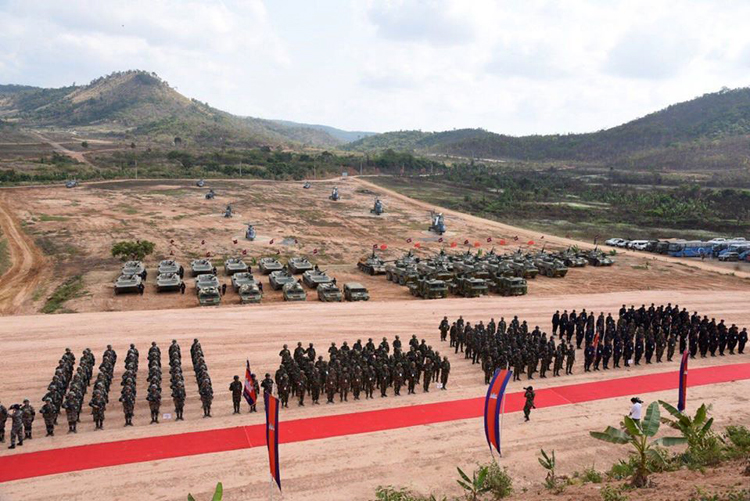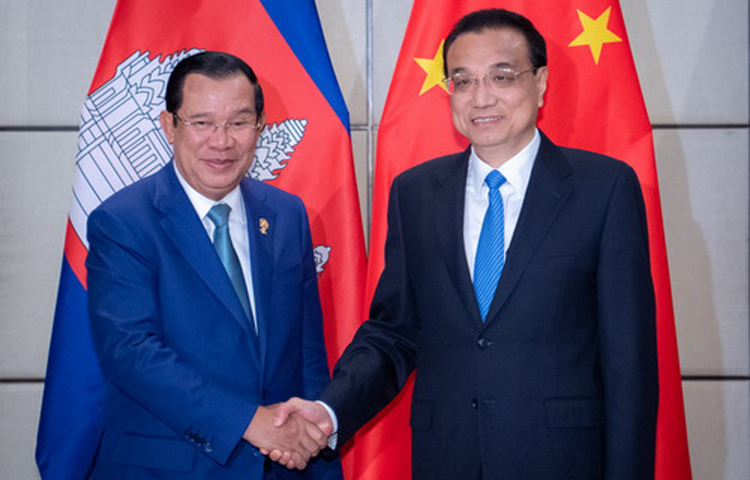INDIAN ARMED FORCES CHIEFS ON OUR RELENTLESS AND FOCUSED PUBLISHING EFFORTS

The insightful articles, inspiring narrations and analytical perspectives presented by the Editorial Team, establish an alluring connect with the reader. My compliments and best wishes to SP Guide Publications.

"Over the past 60 years, the growth of SP Guide Publications has mirrored the rising stature of Indian Navy. Its well-researched and informative magazines on Defence and Aerospace sector have served to shape an educated opinion of our military personnel, policy makers and the public alike. I wish SP's Publication team continued success, fair winds and following seas in all future endeavour!"

Since, its inception in 1964, SP Guide Publications has consistently demonstrated commitment to high-quality journalism in the aerospace and defence sectors, earning a well-deserved reputation as Asia's largest media house in this domain. I wish SP Guide Publications continued success in its pursuit of excellence.
- Global Partners Urged to Tap India's Shipbuilding Potential: Rajnath Singh at Samudra Utkarsh
- All about HAMMER Smart Precision Guided Weapon in India — “BEL-Safran Collaboration”
- India, Germany deepen defence ties as High Defence Committee charts ambitious plan
- G20 Summit: A Sign of Global Fracture
- True strategic autonomy will come only when our code is as indigenous as our hardware: Rajnath Singh
- India–Israel Joint Working Group Meeting on defence cooperation to boost technology sharing and co-development
Chinese Base in Cambodia
The new secret Chinese military base in Cambodia ought to wake up America’s political class, including the US Navy brass, to what is fast becoming a global Chinese challenge
 |
The Author is Former Director General of Information Systems and A Special Forces Veteran, Indian Army |

After China signed 'economic' and 'security' pacts with the Pacific nations of Solomon Islands and Samoa, the US has received another shocker with a US media report, citing unnamed Western officials, saying that the facility of Cambodia’s Ream Base located on the Gulf of Thailand is being built for use by the Chinese Navy.
On June 6, 2022, the Washington Post cited Western officials about the Chinese facility under construction in Cambodia – “north” of Ream Naval Base on the Cambodian coast. According to the report, this will be only the second of its kind after the Chinese base at Djibouti in East Africa. The Washington Post report was followed by an article titled ‘The Chinese Navy’s Great Leap Forward’ published in the Wall Street Journal (WSJ) on June 7, in which WSJ claimed it had reported in 2019 that Cambodia and China had secretly agreed to let the Chinese military use a naval base in Cambodia, which was denied by both countries at that time.
The two countries had taken steps which were bordering on the absurd to hide Chinese naval activity, including disguising Chinese personnel during visits by foreign officials to the base
Much before the US-led QUAD began talking of centrality of the ASEAN in the Indo-Pacific; China had broken the cohesion of ASEAN by applying economic coercion to Cambodia and Laos; the Belt and Road Initiative and by offering loans. The debt to GDP ratio of Cambodia is 40 per cent (much lower than many countries) but borrowing in Cambodia has grown twice as fast as Cambodia’s income in past 10 years. Cambodia owes close to 65 per cent of its debt to China. In the case of Laos, almost half of the country’s public debt is held by China.

The US had warned Cambodia two years back that Chinese loans are dangerous and would endanger the country’s economy. But Beijing has craftily snared Cambodia into the BRI, directly supporting Prime Minister Hun Sen’s government. According to Thearith Leng of the Mekong Centre for Strategic Studies, Asian Vision Institute in Phnom Penh, “Finally, on the decision-making level, the backing of the BRI may stem from Prime Minister Hun Sen’s pragmatic views of how to sustain his rule over the country.”
The WSJ states that a new secret Chinese military base in Cambodia ought to wake up America’s political class, including the US Navy brass, to what is fast becoming a global Chinese challenge. But would they with the Joe Biden administration remaining focused on defeating Russia using Ukraine as its proxy, unmindful of the unprecedented inflation in the US and Europe plus global energy and food shortages, resulting from its actions?
Cambodia’s Minister of Defence, Tea Banh has dismissed fears that it would let China build a military base on its soil, saying any country could use the facilities at the Ream Naval Base
The WSJ article further states, that proliferation of PLA bases is being matched with an ever-growing Chinese navy. The US is heading in the opposite direction, with 297 ships and plans to fall to 280 by 2027. China has 355 and is headed to 460 by 2030. Beijing relies on smaller vessels, but it will soon launch an advanced aircraft carrier that will let it project air power abroad.
China and Cambodia have both denied the above reports in the US media. Chinese foreign ministry spokesman Zhao Lijian told media, “The reconstruction of the Yunyang base is aimed at strengthening the Cambodian Navy’s ability to maintain maritime territorial integrity and combat maritime crime. The US turned a deaf ear to Cambodia’s position, made repeated malicious speculations, attacked and smeared, and even threatened and put pressure on Cambodia. This is a typical act of bullying.”
According to an unnamed senior US defence official quoted in media reports on June 9, Cambodia’s decision to expand its biggest naval base and allow the Chinese military exclusive use of “portion” of it shows extraordinary lack of transparency; being in direct contravention of months and months of denial by them that there was any Chinese involvement, and that the two countries had taken steps which were bordering on the absurd to hide Chinese naval activity, including disguising Chinese personnel during visits by foreign officials to the base.
Deception has always been the hallmark of development of bases by China everywhere till it becomes fait accompli for the adversaries
A day earlier on June 8, a Chinese official said an iron-clad partnership with Cambodia was bolstered by military cooperation, as work began on the China-funded upgrade of Cambodia’s Ream Naval Base. Cambodia’s Minister of Defence, Tea Banh has dismissed fears that it would let China build a military base on its soil, saying any country could use the facilities at the Ream Naval Base.
Tea Banh’s statement appears to be subterfuge because China is not building the naval base on Cambodia’s soil but the upgrade of the Ream Naval Base is funded by China. Moreover, the statement does not deny that the northern portion of the base would be for exclusive use for the Chinese navy. In fact, Zhao Lijjian’s reference to “Yunyang base” could well be the northern portion of the Ream Naval Base for exclusive use by China.
Deception has always been the hallmark of development of bases by China everywhere till it becomes fait accompli for the adversaries. For years, China has made no bones about demanding in international seminars that the US should exit the region. China is emboldened more with the American rout in Afghanistan and its pusillanimous use of Ukraine as proxy to fight Russia.
The US may be exulting that China has been able to sign deals only with Solomon Islands and Samoa during the recent eight-nation tour of Chinese foreign minister Wang Yi to the Pacific. A draft communiqué and the five-year action plan sent by China to the invited Pacific nations prompted opposition from Micronesia while some other nations wanted it to be delayed. But China will not give up. Beijing works like the slow spread of cancer till one day the liver goes kaput. Conversely, the US approach towards China is adhoc. It has already reiterated its support to the ‘One China’ policy and is looking for a Ukraine in the Indo-Pacific to fight China, using that country as proxy.





